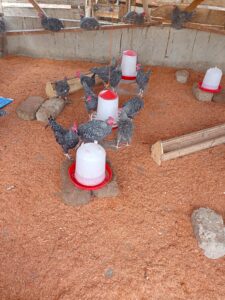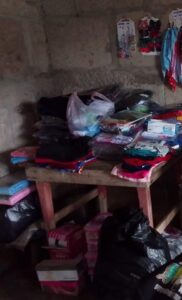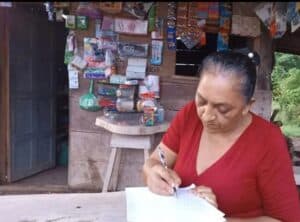
Learning How to Make Water Safe to Drink
By Orlando Montiel Salas – Clean Water Program Officer

Rafael checking the chlorine levels.
Walter Acevedo is a semi-urban community in the Morrito municipality of Río San Juan. 2,500 people across 338 households live in the community. All the households are connected to the water service provided by the Water and Sanitation Committee (CAPS). Since 2014, the community’s water has been potable thanks to a CTI-8 water chlorinator promoted by Self-Help International’s Clean Water Program. In addition to installing the chlorinator, the Clean Water Program has also trained the CAPS directors and the maintenance person for the water system, Rafael.
49-year-old Rafael has lived in the community for 19 years. Both his wife and daughter work elsewhere, so he is alone most of the time. He has been working as a plumber for nine years, from 2 AM to 9 PM every other day, depending on the season. He performs diverse tasks in his role, including pipe repairs, meter repairs, water service cuts, operator well pumping, etc.
In addition to working as a plumber, Rafael is also a farmer. In between his working days as a plumber, he dedicates himself to agriculture, sowing crops that provide his family with food. If a water supply problem arises, Rafael must solve and repair the problem – even if it’s his day off.
As a child, Rafael’s parents prioritized him working the fields, so his education was limited. Despite this, Rafael has learned how to effectively use the chlorine checker to monitor chlorine levels; and he has learned how to interpret the readings to ensure that there is enough chlorine to kill off harmful waterborne diseases but not too much for human consumption. Rafael monitors chlorine levels at the household level weekly so he knows when to replace the tablets.
Rafael is currently using a digital electronic chlorine tester that makes it easier for him to interpret the results because it shows on a screen the amount of chlorine that the water in the pipe contains.
“I feel good about using this device because it is easy to understand and handle thanks to Self-Help’s explanation. I can’t read well, but I know the numbers from one to ten,” Rafael explained. “The change in color that I see in the water when I use the device serves as a guide for reading and understanding the results.”
“I do this measurement every week in both the water in the basin and in the water that reaches people’s homes to verify that everyone is receiving water disinfected with chlorine and that it is of good quality,” he added.
Rafael keeps track of the chlorine checks by recording in a notebook the results of the chlorine measurements. He asks members of the households he visits to write down the checker’s results in the notebook since he doesn’t know how to write.
Thanks to his dedication and hard work, Rafael has earned the respect and trust of the residents in Walter Acevedo. Community members beg him not to leave the water committee since he has done such a good job maintaining the chlorinator.
He says he has learned a lot about plumbing, water chlorination, and chlorine tablets by working with Self-Help in his role as the CAPS plumber. He says that prior to attending the training sessions held by Self-Help, he used to only know how to operate field machinery, but now he also knows how to make water safe to drink.
Rafael exemplifies learning in SHI’s Clean Water Program. He manages to learn even without knowing how to read or write. He knows how to use the chlorine checker and interpret the results, and he is in constant communication with SHI staff by way of WhatsApp audio/voice notes and images of chlorine measurements of the community’s water.

 Previous Post
Previous Post Next Post
Next Post


